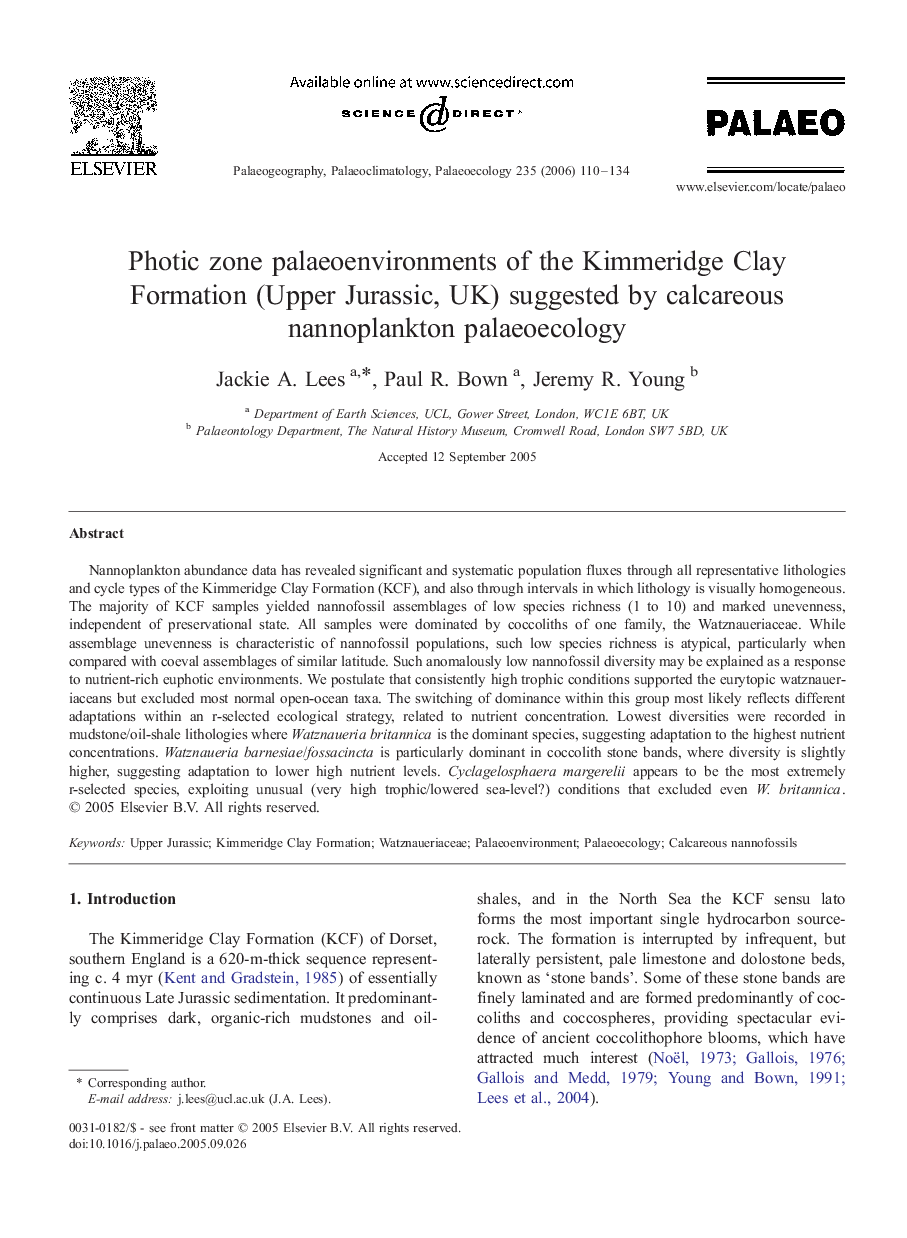| Article ID | Journal | Published Year | Pages | File Type |
|---|---|---|---|---|
| 4469452 | Palaeogeography, Palaeoclimatology, Palaeoecology | 2006 | 25 Pages |
Nannoplankton abundance data has revealed significant and systematic population fluxes through all representative lithologies and cycle types of the Kimmeridge Clay Formation (KCF), and also through intervals in which lithology is visually homogeneous. The majority of KCF samples yielded nannofossil assemblages of low species richness (1 to 10) and marked unevenness, independent of preservational state. All samples were dominated by coccoliths of one family, the Watznaueriaceae. While assemblage unevenness is characteristic of nannofossil populations, such low species richness is atypical, particularly when compared with coeval assemblages of similar latitude. Such anomalously low nannofossil diversity may be explained as a response to nutrient-rich euphotic environments. We postulate that consistently high trophic conditions supported the eurytopic watznaueriaceans but excluded most normal open-ocean taxa. The switching of dominance within this group most likely reflects different adaptations within an r-selected ecological strategy, related to nutrient concentration. Lowest diversities were recorded in mudstone/oil-shale lithologies where Watznaueria britannica is the dominant species, suggesting adaptation to the highest nutrient concentrations. Watznaueria barnesiae/fossacincta is particularly dominant in coccolith stone bands, where diversity is slightly higher, suggesting adaptation to lower high nutrient levels. Cyclagelosphaera margerelii appears to be the most extremely r-selected species, exploiting unusual (very high trophic/lowered sea-level?) conditions that excluded even W. britannica.
